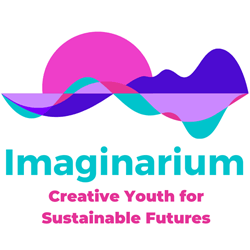- Activity
This exercise can be especially helpful when a group is cynical about a subject or lacking energy. If you have members on your team who are pessimistic or who are worn out, this exercise can help take advantage of the pessimism or fatigue. Let’s imagine that your session is about ecological lifestyle. The group might not be enthusiastic about such a challenge. Lack of enthusiasm may happen because they think the problem is too complex to be solved and one person’s actions can’t make a difference. Besides, eco life is expensive, requires effort and change…
In traditional brainstorming, you would ask the question: “How can we change our daily behavior and actions to be more eco-friendly?” In reverse brainstorming, you ask the opposite one “How can we change our daily behavior and actions to be less eco friendly?”. Working with the reverse brainstorming session you give space for all the negative ideas to be acknowledged and heard. Once you have a list of all the negative ideas on board, you invite the group to the final and most essential step. At this point you turn these negative ideas into positive solutions and you’re able to end the session with constructive results.
- Describe the problem that you are looking for solutions to. Formulate a negative version of the challenge. Explain to the group that the reverse brainstorming method is a ‘reverse psychology’ method, emphasizing that it is a research backed method for brainstorming.
- Divide the group into teams of several people (3 to 8 people per group).
- Remind the groups of the most important rules for brainstorming:
- Every idea is important, we don’t judge ideas
- The quantity not the quality of ideas counts
- Crazy ideas are very welcome
- During the first 5 minutes of reverse brainstorming, suggest that each person work individually on their ideas. Ask them to write down one idea per sticky note. Encourage them to let their imagination go wild and express all negative thoughts or ideas they have on the subject at the moment.
- After 5 minutes, invite participants to share ideas in their groups. Only one person can speak at a time, placing their ideas on a board/flip chart sheet
- Now that all the negative ideas have been presented, explain that now they are tasked with thinking about how to transform each idea into a positive one. If they find it difficult, invite the group to discuss what needs to happen to overcome the barriers. For example, if the idea is: “I don’t segregate my rubbish, I throw everything in one bin”. The question could be: “What needs to happen for my behavior to change?” Encourage participants to look for motivation, maybe there are people who are recycling masters and are willing to share how or why they do it.
- How do they feel after the exercise? Did this experience bring any change?
- Was it difficult? Yes, why? No, why?
More inspiration for boosting group creativity you can find here: How to stimulate group creativity






